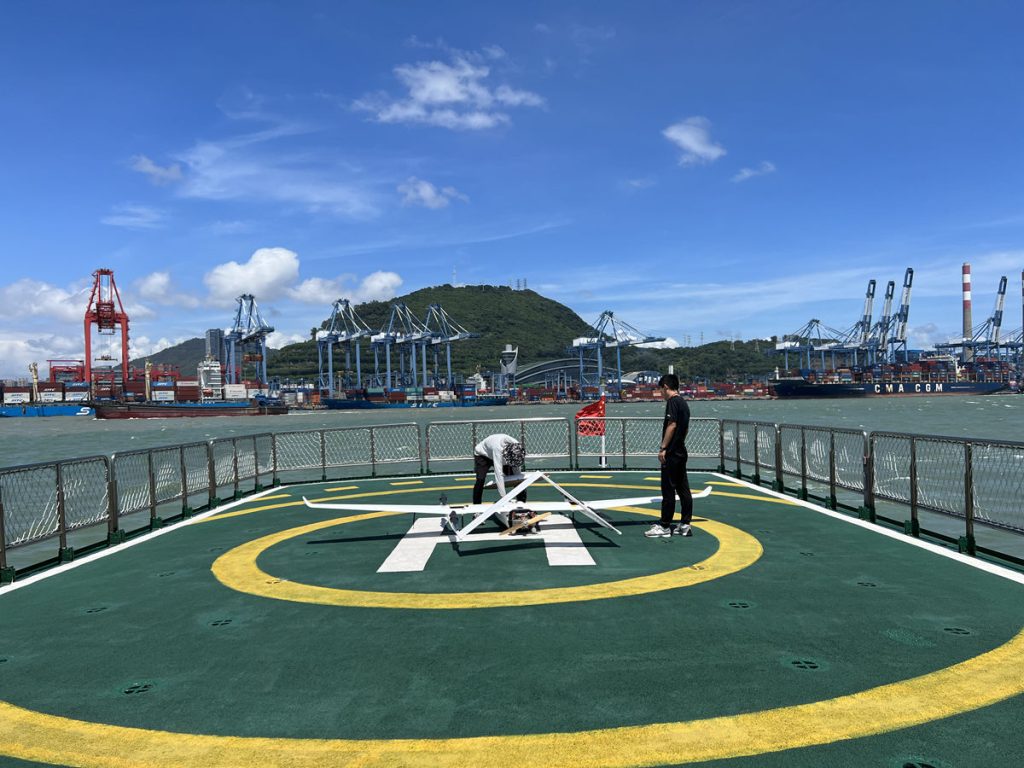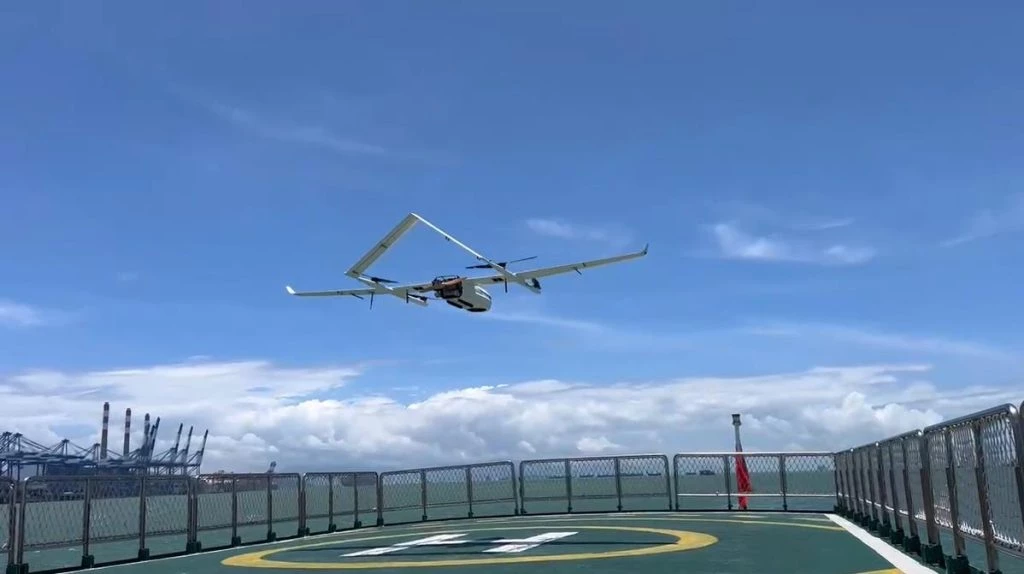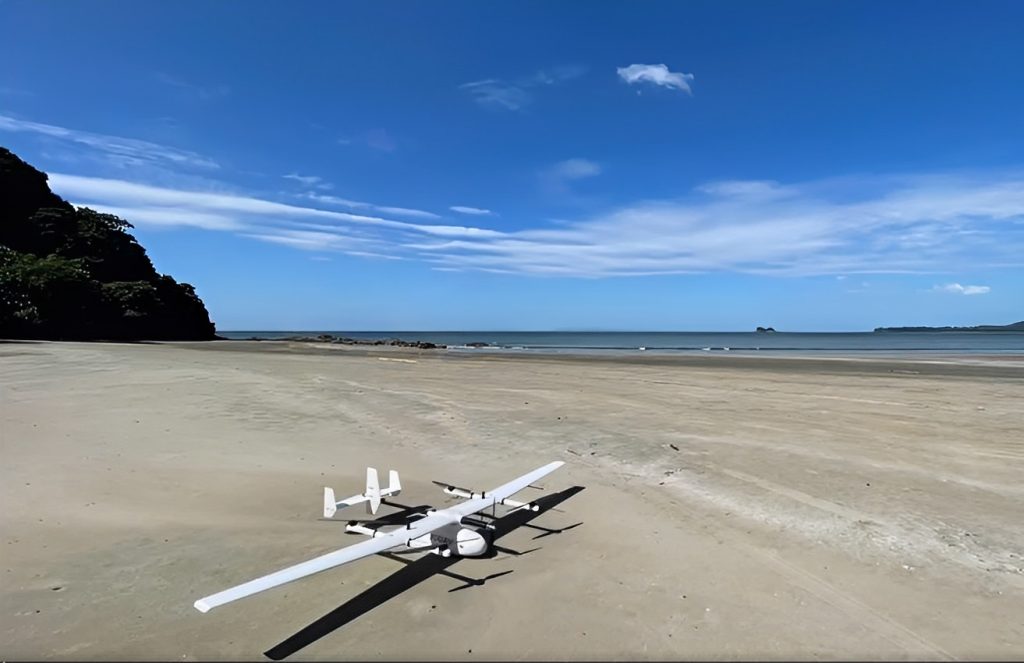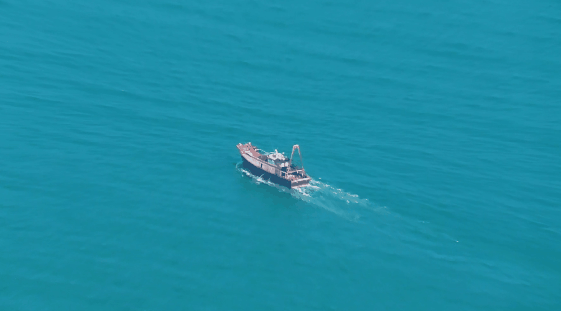Maritime drones, also known as sea drones or naval UAVs, have emerged as valuable tools in various maritime operations. From surveillance and search and rescue missions to surveys and inspections, these drones have become essential assets for professionals and enthusiasts alike.
Are you curious about the capabilities of maritime drones and their applications across different industries? If so, you've come to the right place. In this comprehensive article, we will explore the world of maritime drones, highlighting their uses in various sectors and showcasing some top models available on the market.
Let's embark on this exciting journey of discovery together!

**What is a Maritime Drone?**
A maritime drone is an unmanned aerial vehicle (UAV) specifically designed for operation over water. What sets them apart from traditional drones is their durability and specialized features. These water-friendly devices are built to withstand aquatic environments with waterproofing, corrosion-resistant materials, and buoyancy systems.
When it comes to navigation, sea drones are well-prepared. Equipped with advanced GPS and gyroscopes, they can fly steadily over vast water bodies, making them ideal for marine surveillance, research, and search and rescue missions. Their payloads are tailored for marine tasks too, including high-resolution cameras, thermal sensors, and even sonar for underwater surveys. While traditional drones excel in land-based missions, maritime drones dominate the seas with their unique capabilities.

**Types of Maritime Drones**
There are several types of maritime drones that have transformed how we navigate, patrol, and explore the marine environment:
- **Surface Drones**: These unmanned watercraft glide gracefully on the surface, offering versatility in tasks like marine research, search and rescue, and capturing footage.
- **Underwater Drones**: Submersible marvels used for marine surveying, inspection, and environmental research. They provide insights into marine ecosystems and underwater structures.
- **Hybrid Drones**: Combining both surface and underwater capabilities, allowing for a comprehensive view of both worlds. Ideal for marine biologists and researchers.
- **Airborne Drones**: Though not directly associated with the maritime environment, airborne drones play a significant role in supporting maritime operations through aerial surveillance and coastal monitoring.

**Benefits of Drone Technology in the Maritime Industry**
Naval UAVs offer enhanced efficiency, safety, and data collection capabilities. Here are some key advantages:
- **Enhanced Safety**: Drones can perform hazardous tasks without risking human lives, making them safer for challenging conditions like storms or rough seas.
- **Cost-Effectiveness**: Drones reduce operational costs by covering large areas quickly and being less expensive to maintain compared to traditional methods.
- **Rapid Search and Rescue Operations**: Drones can swiftly cover large expanses of water, expediting search and rescue efforts and potentially saving lives.
- **Efficient Surveys and Inspections**: With high-resolution cameras and sensors, drones can complete surveys and inspections more efficiently, providing accurate assessments of maintenance needs and environmental conditions.
**How are Drones Used in the Maritime Industry?**
Ocean drones have opened up numerous applications, ranging from surveillance and search-and-rescue missions to marine inspections and surveying.
- **Maritime Patrol and Surveillance**: Drones equipped with high-resolution cameras and infrared sensors aid in detecting illegal activities and ensuring security.
- **Search and Rescue**: Drones can locate distressed vessels or individuals quickly, providing real-time visuals to rescue teams.
- **Maritime Survey and Inspections**: Drones streamline these processes, conducting safe and efficient inspections of ports, bridges, and offshore platforms.
- **Environmental Conservation**: Drones facilitate environmental monitoring, helping researchers assess water quality, detect oil spills, and track changes in marine habitats.

**Factors to Consider When Choosing a Maritime Drone**
When selecting a maritime drone, consider the following parameters:
- **Water and Weather Resistance**: Look for a high IP rating for protection against splashes, rain, and temporary immersion.
- **Range and Endurance**: Opt for a drone with a minimum flight range of 5 kilometers and at least 30 minutes of flight time.
- **Remote Control Range**: Choose a drone with a remote control range of at least 2 kilometers.
- **Camera and Sensor Capabilities**: Prioritize drones with 4K or higher resolution cameras, gimbal stabilization, and specialized sensors.
- **Real-Time Data Transmission**: Ensure the drone supports real-time data transmission for prompt decision-making.
- **GPS and Navigation Systems**: A reliable GPS system with RTK capability is essential for precise positioning during surveys.
**Best Maritime Drones (2023 Guide & Review)**
In this section, we'll explore some of the best maritime drones available on the market:
- **JOUAV CW-15 - Best Maritime Drone for Surveillance**: With an impressive maximum flight time of 180 minutes and a video transmission range of 50 km, the CW-15 offers extensive coverage for maritime operations.
- **JOUAV CW-25 - Best Marine Biology Drone**: With an extended flight time of 330 to 360 minutes and a video transmission range of 200 km, the CW-25 allows for prolonged data collection over vast marine territories.
- **JOUAV CW-007 - Best Maritime Survey Drones**: This survey drone provides ample time to complete missions efficiently, covering large areas with its exceptional survey efficiency.
- **JOUAV PH-7E - Best Maritime Search and Rescue Drone**: Equipped with a powerful thermal camera, the PH-7E is highly effective in spotting individuals or vessels in distress.
**How Much Does a Maritime Drone Cost?**
The price of maritime drones varies significantly based on size, capabilities, and intended applications. Generally, prices can range from $1,000 to $100,000 or more. Small consumer-grade drones fall in the lower price range, while advanced professional drones can cost between $10,000 to $50,000. For large-scale industrial and research applications, the most sophisticated drones can reach prices of $100,000 or more.
**Maritime Drone Laws and Regulations**
Operating maritime drones involves adhering to important laws and regulations. Key considerations include registration, operator certification, restricted airspace, flight restrictions, privacy and data protection, and safety guidelines.
**Future Trends and Innovations in Maritime Drones**
The future of maritime drones is bright, with trends such as increased autonomy, swarm technology, extended range and endurance, enhanced payloads, climate monitoring, and collaborative research projects shaping the industry.
**FAQ**
- **What are Drones Used for in Marine Biology?**: Drones are used for aerial surveys, marine mammal research, habitat monitoring, and tracking marine species.
- **How Much Does Maritime Drone Service Cost?**: The cost varies depending on factors like the type of drones, task complexity, duration, and location. Basic services can start from around $500 per day, while advanced services may cost between $1,500 to $5,000 per day.
As technology continues to evolve, the potential applications of maritime drones will expand, fostering innovation and transformative solutions across various industries.
Level Gauge,Water Level Gauge,Oil Level Gauge,Water Tank Gauge
Hengshui Aohong Technology Co.,Ltd. , https://www.aohong-sealing.com
